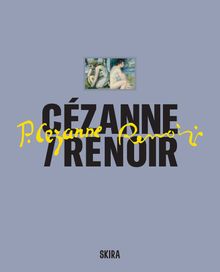| |||||||||||||||||||||||||
ARTIST MONOGRAPHS
|
|
in stock $50.00 Free Shipping UPS GROUND IN THE CONTINENTAL U.S. |
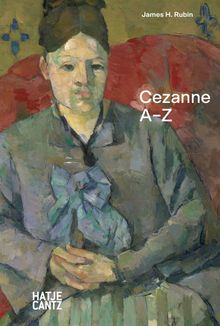 Cezanne: A–Z
Cezanne: A–Z
Published by Hatje Cantz.
By James H. Rubin.
Paul Cezanne’s incomparable, architectonic rendering of light and color provided the foundation of his reputation as a forerunner of modernism. Which specific locations left such vivid impressions on this scion of a provincial banker’s family? What and who were the influences supporting and advancing his innovative oeuvre? In this affordable volume, acclaimed art historian James H. Rubin traces Cezanne’s life and work from A to Z, creating an image of a painter who aspired to “do Poussin over again after nature.” As the book's title indicates, Rubin also explicates and champions the Société Paul Cezanne’s campaign to remove the accent on the artist’s surname in accordance with its original Provençal spelling.
James H. Rubin (born 1944) is an art historian and professor at the State University of New York in Stony Brook, specializing in 19th-century art with a particular interest in French modernism. He has published 13 books, including Impressionism (Phaidon, 1999), Impressionism and the Modern Landscape (University of California Press, 2008), How to Read Impressionism (Abrams, 2013) and, most recently, Why Monet Matters: Meanings Among the Lily Pads (Penn State University Press, 2021).
PUBLISHER
Hatje Cantz
BOOK FORMAT
Hardcover, 5 x 7.75 in. / 144 pgs / 40 color.
PUBLISHING STATUS
Pub Date 2/1/2022
Active
DISTRIBUTION
D.A.P. Exclusive
Catalog: FALL 2021 p. 64
PRODUCT DETAILS
ISBN 9783775749138 TRADE
List Price: $24.00 CAD $36.00
AVAILABILITY
In stock
in stock $24.00 Free Shipping UPS GROUND IN THE CONTINENTAL U.S. |
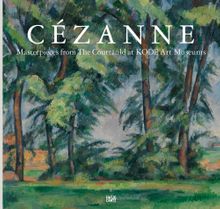 Cézanne: Masterpieces from the Courtauld
Cézanne: Masterpieces from the Courtauld
Published by Hatje Cantz.
Text by Oystein Sjastad.
There are some collectors who, through foresight and dedication, have built truly outstanding art collections and shared them widely as part of public museums. Among these were Samuel Courtauld in London, England, and Rasmus Meyer in Bergen, Norway. At the heart of each man's collection was a single artist whose work was their greatest passion: for Courtauld, it was the French painter Paul Cézanne and, for Meyer, it was Norway’s own Edvard Munch. This unique collaboration between KODE Art Museums in Bergen and the Courtauld in London celebrates these two remarkable collectors and two great artists by temporarily exchanging the collections. This volume tells the story of Cézanne’s rise to prominence. This publication not only presents 10 key works from the Courtauld along with Cézannes from Norwegian collections, it also brings them together with eyewitness accounts from the early years of his profound influence.
PUBLISHER
Hatje Cantz
BOOK FORMAT
Hardcover, 11 x 11.25 in. / 128 pgs / 75 color.
PUBLISHING STATUS
Pub Date 9/21/2021
Out of stock indefinitely
DISTRIBUTION
D.A.P. Exclusive
Catalog: FALL 2021 p. 143
PRODUCT DETAILS
ISBN 9783775750554 TRADE
List Price: $50.00 CAD $68.00
AVAILABILITY
Not available
STATUS: Out of stock indefinitely. |
 Cézanne: Drawing
Cézanne: Drawing
Published by The Museum of Modern Art, New York.
Edited with text by Jodi Hauptman, Samantha Friedman. Text by Kiko Aebi, Annemarie Iker, Laura Neufeld.
Winner of a PROSE Award | Association of American Publishers (AAP), 2022
A New York Magazine 2021 holiday gift guide pick
Although he is most often celebrated as a painter, Paul Cézanne’s extraordinary vision was fueled by his experiments on paper. In pencil and watercolor, on individual sheets and across the pages of sketchbooks, the artist described form through multiple probing lines; realized compositions through repetitions and transformations; and conjured kaleidoscopic color through layering of watercolor. It is in these material realities of drawing where we see Cézanne at his most modern: embracing the unfinished, making process visible and actively inviting the viewer to participate in the act of perception.
Published to accompany a major exhibition at the Museum of Modern Art, this is the most significant effort to date to unite drawings from across Cézanne’s entire career, tracing the development of his practice on paper, exploring working methods that transcend subject, and devoting both curatorial and conservation-based research to these remarkable works.
PUBLISHER
The Museum of Modern Art, New York
BOOK FORMAT
Hardcover, 9 x 10.5 in. / 184 pgs / 254 color.
PUBLISHING STATUS
Pub Date 7/13/2021
Active
DISTRIBUTION
D.A.P. Exclusive
Catalog: SPRING 2021 p. 27
PRODUCT DETAILS
ISBN 9781633451261 TRADE
List Price: $50.00 CAD $75.00
AVAILABILITY
In stock
in stock $50.00 Free Shipping UPS GROUND IN THE CONTINENTAL U.S. |
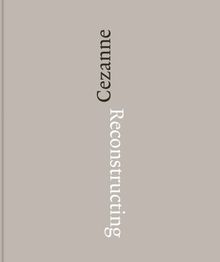 Reconstructing Cézanne
Reconstructing Cézanne
Sequence and Process in Paul Cézanne’s Works on Paper
Published by Ridinghouse/Luxembourg & Dayan.
Introduction by Walter Feilchenfeldt. Text by Fabienne Ruppen, Yuval Etgar.
This book brings to light new research into the work of Paul Cézanne (1839–1906), based on close examination of the DNA makeup that constitutes the papers he used for his watercolors and drawings. The book features in-depth analyses of the works in the show by Fabienne Ruppen, as well as extensive commentary on Cézanne scholarship by Walter Feilchenfeldt, co-author of the artist’s new catalogue raisonné.
At the heart of the book are two watercolors that Cézanne produced from a large sheet of paper, which he divided in two sections for the purpose of capturing different landscapes, La Montagne Sainte-Victoire, from 1885–87, and a Paysage Provençal. Reunited for the first time, these two parts of the same sheet exemplify Ruppen’s research methods and the way these enable us to reconsider the dating of Cézanne’s work based on forensic evidence.
PUBLISHER
Ridinghouse/Luxembourg & Dayan
BOOK FORMAT
Hardcover, 9 x 10.75 in. / 80 pgs / 35 color.
PUBLISHING STATUS
Pub Date 2/18/2020
Active
DISTRIBUTION
D.A.P. Exclusive
Catalog: SPRING 2020 p. 151
PRODUCT DETAILS
ISBN 9781909932555 TRADE
List Price: $35.00 CAD $49.00
AVAILABILITY
In stock
in stock $35.00 Free Shipping UPS GROUND IN THE CONTINENTAL U.S. |
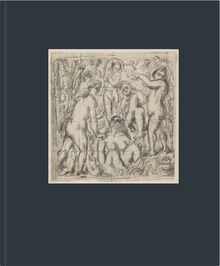 Cézanne at the Whitworth
Cézanne at the Whitworth
Published by Ridinghouse.
Text by Richard Thomson, Christopher Lloyd, Elizabeth Cowling, Rosalind McKever, Colin Wiggins, Edward Wouk, Richard Shone. Interview with Karsten Schubert by Yuval Etgar.
In honor of the generous bequest by the late Karsten Schubert, founder of Ridinghouse, to the Whitworth Art Gallery in Manchester, this luxurious book, featuring a tipped-on cover drawing, focuses exclusively on Paul Cézanne’s (1839–1906) drawings and prints of diverse subjects: from portraits and bather scenes to landscapes and copies after past art. This important act of generosity means that the Whitworth now holds the best collection of Cézanne works on paper in the UK, including a version of every print produced by the artist.
With essays by renowned Impressionist scholars Richard Thomson and Christopher Lloyd and full catalog entries on all the works in the show, this volume demonstrates that the essence of Cézanne as an artist lies just as much in his lesser-known works on paper as in his paintings.
PUBLISHER
Ridinghouse
BOOK FORMAT
Hardcover, 9 x 10.75 in. / 96 pgs / 50 color.
PUBLISHING STATUS
Pub Date 4/21/2020
Active
DISTRIBUTION
D.A.P. Exclusive
Catalog: SPRING 2020 p. 151
PRODUCT DETAILS
ISBN 9781909932562 TRADE
List Price: $35.00 CAD $49.00
AVAILABILITY
In stock
in stock $35.00 Free Shipping UPS GROUND IN THE CONTINENTAL U.S. |
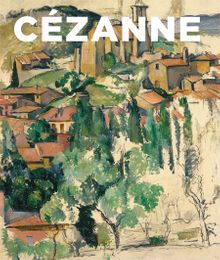 Cézanne: Site/Non-Site
Cézanne: Site/Non-Site
Published by Fundación Colección Thyssen-Bornemisza.
Edited with text by Guillermo Solana. Text by Paula Luengo.
PUBLISHER
Fundación Colección Thyssen-Bornemisza
BOOK FORMAT
Flexi, 8.5 x 9.75 in. / 200 pgs / 117 color / 23 bw.
PUBLISHING STATUS
Pub Date 7/31/2014
Out of print
DISTRIBUTION
D.A.P. Exclusive
Catalog: FALL 2014 p. 153
PRODUCT DETAILS
ISBN 9788415113508 FLAT40
List Price: $55.00 CAD $65.00
AVAILABILITY
Not available
STATUS: Out of print | 00/00/00 For assistance locating a copy, please see our list of recommended out of print specialists |
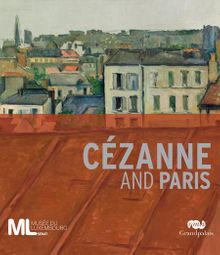 Cézanne and Paris
Cézanne and Paris
Published by Réunion des Musées Nationaux, Grand Palais.
Text by Jean Arrouye, Maryline Assante di Panzillo, Nina Athanassoglou-Kallmayer, Isabelle Chan, Phillipe Cezanne, André Dombrowski, Benedict Leca, Pavel Machotka, Joachim Pissaro, Joseph J. Rischel, James H. Rubin, et. al.
PUBLISHER
Réunion des Musées Nationaux, Grand Palais
BOOK FORMAT
Paperback, 10 x 11.5 in. / 224 pgs / 220 color.
PUBLISHING STATUS
Pub Date 8/31/2012
Out of print
DISTRIBUTION
D.A.P. Exclusive
Catalog: FALL 2012 p. 73
PRODUCT DETAILS
ISBN 9782711859191 TRADE
List Price: $45.00 CAD $55.00
AVAILABILITY
Not available
STATUS: Out of print | 00/00/00 For assistance locating a copy, please see our list of recommended out of print specialists |
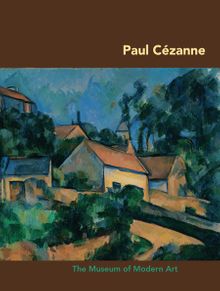 Paul Cézanne
Paul Cézanne
Published by The Museum of Modern Art, New York.
Text by Carolyn Lanchner.
PUBLISHER
The Museum of Modern Art, New York
BOOK FORMAT
Paperback, 6 x 8 in. / 48 pgs / 35 color.
PUBLISHING STATUS
Pub Date 9/30/2011
Active
DISTRIBUTION
D.A.P. Exclusive
Catalog: SPRING 2011 p. 68
PRODUCT DETAILS
ISBN 9780870707896 TRADE
List Price: $9.95 CAD $14.95
AVAILABILITY
In stock
in stock $9.95 Free Shipping UPS GROUND IN THE CONTINENTAL U.S. |
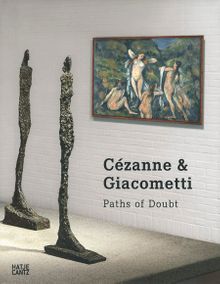 Cézanne & Giacometti: Paths of Doubt
Cézanne & Giacometti: Paths of Doubt
Published by Hatje Cantz.
Text by Felix Baumann, Tobia Bezzola, Inken Freudenberg, Donat Rütimann, Poul Erik Tøjner.
PUBLISHER
Hatje Cantz
BOOK FORMAT
Hardback, 8.5 x 11 in. / 360 pgs / 195 color.
PUBLISHING STATUS
Pub Date 5/1/2008
Out of print
DISTRIBUTION
D.A.P. Exclusive
Catalog: SPRING 2008 p. 87
PRODUCT DETAILS
ISBN 9783775720892 TRADE
List Price: $60.00 CAD $70.00
AVAILABILITY
Not available
STATUS: Out of print | 00/00/00 For assistance locating a copy, please see our list of recommended out of print specialists |
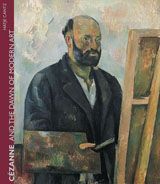 Cézanne And The Dawn Of Modern Art
Cézanne And The Dawn Of Modern Art
Published by Hatje Cantz.
Edited by Felix A. Baumann, Walter Feilchenfeldt, and Hubertus Gassner. Essays by Pepe Karmel, Peter Kropmanns and Fred Leemann.
PUBLISHER
Hatje Cantz
BOOK FORMAT
Hardcover, 9.5 x 11 in. / 240 pgs / 113 color / 67 bw.
PUBLISHING STATUS
Pub Date 2/15/2005
Out of print
DISTRIBUTION
D.A.P. Exclusive
Catalog: SPRING 2005 p. 24
PRODUCT DETAILS
ISBN 9783775714884 TRADE
List Price: $60.00 CAD $70.00
AVAILABILITY
Not available
STATUS: Out of print | 8/1/2007 For assistance locating a copy, please see our list of recommended out of print specialists |
Pioneering Modern Painting: Cézanne And Pissarro 1865 To 1885
Published by The Museum of Modern Art, New York.
Essay by Joachim Pissarro.
PUBLISHER
The Museum of Modern Art, New York
BOOK FORMAT
Hardcover, 9.5 x 12 in. / 200 pgs / 92 color / 50 bw.
PUBLISHING STATUS
Pub Date 6/15/2005
Out of print
DISTRIBUTION
D.A.P. Exclusive
Catalog: SPRING 2005 p. 26
PRODUCT DETAILS
ISBN 9780870701849 TRADE
List Price: $60.00 CAD $70.00
AVAILABILITY
Not available
STATUS: Out of print | 8/1/2007 For assistance locating a copy, please see our list of recommended out of print specialists |
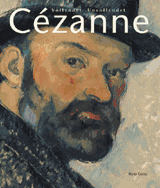 Paul Cézanne: Finished - Unfinished
Paul Cézanne: Finished - Unfinished
Published by Hatje Cantz.
Contributors include Klaus Albrecht Schroder, Felix Baumann, Evelyn Benesch, Walter Feilchenfeldt.
PUBLISHER
Hatje Cantz
BOOK FORMAT
Hardcover, 9.5 x 11.5 in. / 408 pgs / 200 color / 100 bw
PUBLISHING STATUS
Pub Date 2/2/2000
Out of print
DISTRIBUTION
D.A.P. Exclusive
Catalog: SPRING 2000
PRODUCT DETAILS
ISBN 9783775708791 TRADE
List Price: $65.00 CAD $75.00
AVAILABILITY
Not available
STATUS: Out of print | 6/1/2005 For assistance locating a copy, please see our list of recommended out of print specialists |
